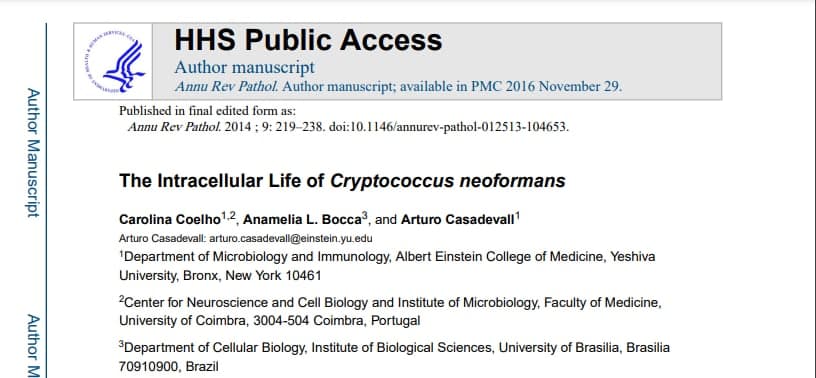Publicações Principais
The intracellular life of Cryptococcus neoformans
Abstract
Cryptococcus neoformans is a fungal pathogen with worldwide distribution. Serological studies of human populations show a high prevalence of human infection, which rarely progresses to disease in immunocompetent hosts. However, decreased host immunity places individuals at high risk for cryptococcal disease. The disease can result from acute infection or reactivation of latent infection, in which yeasts within granulomas and host macrophages emerge to cause disease. In this review, we summarize what is known about the cellular recognition, ingestion, and killing of C. neoformans and discuss the unique and remarkable features of its intracellular life, including the proposed mechanisms for fungal persistence and killing in phagocytic cells.


